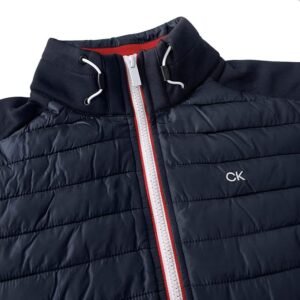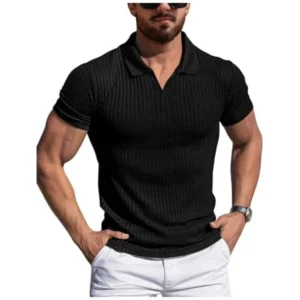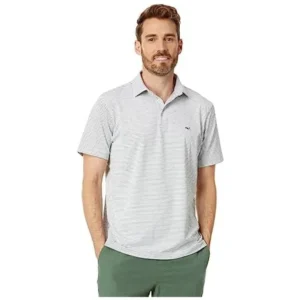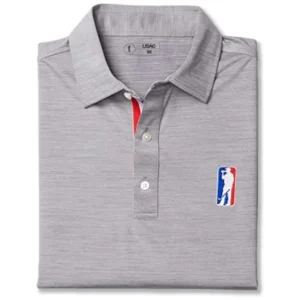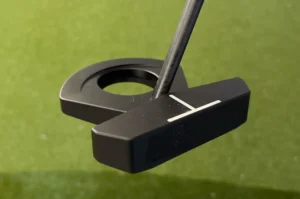The type of grass used on golf courses can have a significant impact on playing conditions and ultimately how you play the game. While the average golfer may not pay much attention to the grass varieties under their feet, understanding the key traits of different turfgrasses can provide keen insights into how your shots, putts and overall round may be affected.
In this article, we’ll overview six of the most common grass types utilized on golf courses around the world and discuss their ideal climate, maintenance needs, playability characteristics and how they can influence your game.
Grass types for golf
Bermudagrass
Of all the warm season grasses, bermudagrass is the most widely used on golf courses particularly across the southern United States. This aggressive, heat-loving grass thrives in hot, humid environments and can tolerate both drought and periods of intense rainfall.
Bermudagrass requires ample fertilization and aerification several times per year and must be mown very tight to provide an optimal putting surface and playing conditions. When maintained properly, bermudagrass delivers a very tight lies and firm, fast playing surface.
However, as bermuda grows vertically, the grass blades tend to pile on top of each other creating a noticeable grain. Many golfers complain about the effects of “the bermuda grain” as it forces players to alter shots when playing into the direction of the grain. Putting can also be impacted along the direction of the grain.
During the summer months, most bermudagrass fairways are overseeded with perennial ryegrass to maintain green color, density and smoothness through dormancy periods.
Bentgrass
Bentgrass is considered the ideal grass for putting greens across northern regions and climates. This cool season grass thrives in temperatures below 80 degrees Fahrenheit and performs best in more mild, moist environments. Bentgrass can be mowed very low to provide a pure, smooth putting surface with little grain. It also maintains excellent density under lower mowing heights.
However, bentgrass performs poorly in heat and requires constant irrigation in the summer to avoid heat stress and diminished playing conditions. At the first sign of drought-like conditions, bentgrass greens can deteriorate rapidly. Courses with bentgrass greens typically provide golfers with expanded hole locations during summer months to avoid excessive wear and traffic damage.
While more challenging and costly to maintain, bentgrass delivers unmatched conditions for much of the year in northern climates. When properly cared for, bentgrass produces true, fast greens that accentuate a golfer’s putting touch.
Fescue
Fescue represents a grouping of hardy, cool season grasses often utilized for fairways and roughs, especially on golf courses built in coastal regions or the transition zone across the Carolinas and further south. Within the fescue family, tall fescues are most commonly seeded on golf turf areas.
A strong point of fescues lies in their lower maintenance requirements. Fescue fairways and rough areas demand only moderate fertilization and hold up well to foot traffic compared to other cool season grasses. Fescue also excels during drought conditions, requiring far less irrigation than bentgrass and other turf. These hardy grasses perform well along coastal areas and impart dry, firmer fairways that mimic links-style golf conditions.
The stiff blades and deep roots of fescues produce morebounce on approach shots into greens and impose challenging lies from the rough. Fescue areas also contrast visually from other golf course turf.
Zoysiagrass
A warm season grass that serves as an excellent transitional turf for courses situated between the cool-season north and warmer southern zones, zoysiagrass brings several strong traits to golf playability. This grass thrives in heat but also tolerates cooler temperatures in spring and fall. Zoysia fairways provide excellent lies as the turf knits tightly together forming a dense mat. The fairways generally exude minimal grain even as the grass grows taller between mowings.
Zoysia also makes an outstanding rough grass around greens and bunkers as the turf’s stiffness penalizes wayward shots. While far more heat and drought tolerant than cool season grasses, zoysiagrass still requires adequate irrigation to keep the playing surfaces green and vital.courses with bentgrass greens typically provide golfers with expanded hole locations during summer months to avoid excessive wear and traffic damage.
While more challenging and costly to maintain, bentgrass delivers unmatched conditions for much of the year in northern climates. When properly cared for, bentgrass produces true, fast greens that accentuate a golfer’s putting touch.
Poa annua
The bunch-type grass Poa annua, though considered a weed on golf greens, still maintains a stronghold on many northern courses. Given its prolific seed heads, poa annua is quick to germinate and easily infiltrates bentgrass and other greens.
During cool, wet conditions in spring and fall, poa annua thrives and can overtake greens with its lime green color and unsightly seed heads. However, this annual grass withstands heavy foot traffic and when carefully managed, poa annua greens can provide smooth, consistent putting surfaces. The seed heads also aid golfers in reading breaks and slopes on the putting surfaces.
Yet as temperatures rise, poa annua readily succumbs to disease and heat stress producing bumpy, inconsistent turf. Superintendents must remain vigilant to keep invading poa annua in check while maintaining sufficient bentgrass or other desirable grasses on putting greens.
Perennial Ryegrass
While a cool season grass less suited for fairways or greens, perennial ryegrass fills an important role on golf courses as an overseeding grass. Seeded heavily on bermudagrass fairways prior to dormancy periods, the emerald green ryegrass maintains color, playability and smoothness through fall and winter seasons until the bermuda revives in spring.
The fine-bladed, lush ryegrass also provides an ideal surface for chipping and pitches around greens. However, perennial ryegrass performs poorly in heat and under low mowing heights, thinning out drastically on putting surfaces during summer. Courses utilize ryegrass overseeding to bridge playability gaps and provide green golf year-round.
The type of grass substantially impacts the playability, visuals and maintenance needs of a golf course. Bermudagrass and bentgrass account for the majority of grasses on greens and fairways across many U.S. regions and situations.
Yet alternative grasses like fescue and zoysia fill important transitional roles and climates. Poa annua remains problematic but can provide great putting surfaces when carefully managed. And supplemental grasses like ryegrass prove vital for maintaining optimal course conditions year-round.
Beyond the major types highlighted, courses across coastal and tropical regions may utilize paspalum, seashore paspalum, kikuyu grass or other turf varieties that withstand oceanfront and tropical environments. No matter the grass, proper agronomic practices are key to producing the premier playing surfaces golfers want to experience.
Knowing the characteristics of the various golf turfgrasses provides keen insight into the design, maintenance and playability of a course. Next time you step onto the first tee or crouch down to read a putt, consider the grass underfoot and how it may impact your game. After all, the type of grass matters in this game we call golf.


